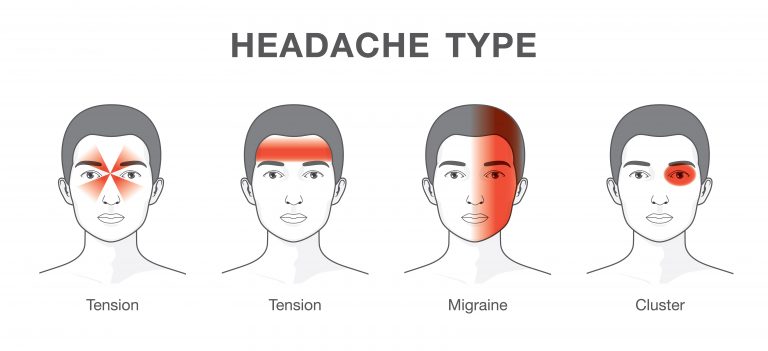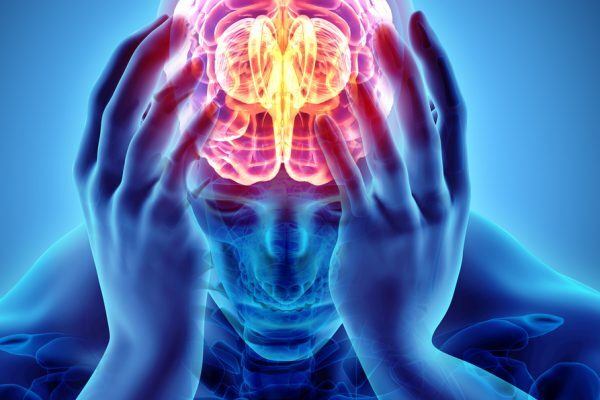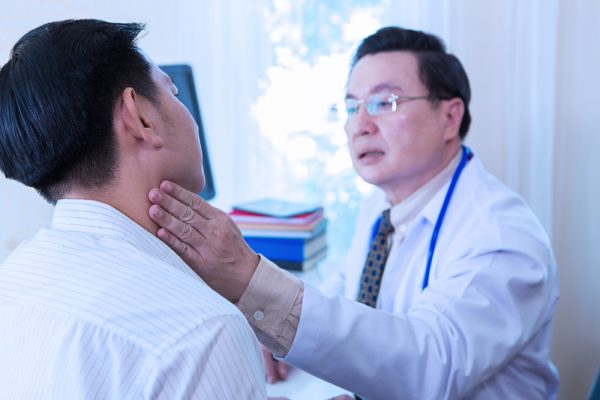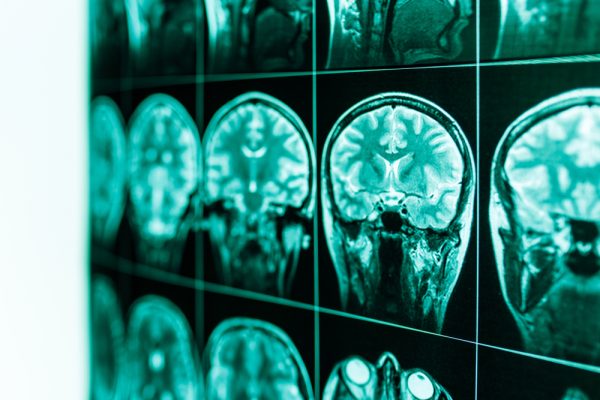California Workers’ Compensation Law allows for Injured Workers to claim work injuries in the form of Headaches. Headaches Injury claims can be complicated. This article is intended to discuss workers’ compensation and the issues related to filing a claim for Headaches.
Headaches are a serious concern in the workplace. It is reported that “the time off work due to the headache disorders is substantial.” See Journal of Epidemiology and Community Health 1992; 46: 443-446 Impact of a headache on sickness absence and utilization of medical services: a Danish population study Birthe Krogh Rasmussen, Rigmor Jensen, Jes Olesen. The AMA Guides to the Evaluation of Permanent Impairment 5th Edition reports that Headache Disorders are a major cause of work loss. See P. 567.
Headache injury claims are complicated because there is not one just kind of Headache. There are over 150 different types of headaches. Each different type of headaches has a different cause. As a result, if a worker is filing a headache injury claim, one must be able to prove that their headaches are industrial in nature. In order to prevail, the Injured Worker must have a medical opinion from a physician expressing that their work activities were, in fact, a cause of or an aggravating/accelerating factor for their headaches. Note: the sole reason for the headaches need not to be industrial. Also, a pre-existing headache can also be an industrial injury if it was aggravated by work.
How Can Headaches Be Work-Related?
Headaches, on an industrial basis, can be caused by a variety of reasons. They can arise from head traumas, orthopedic injuries, job stress, industrially caused sleep disorders, working in a poor ergonomic environment, working in a physically demanding work environment, or as a result of an industrially caused cardiovascular event. They can occur due to exposure in the workplace to such items as fumes, dust, and chemicals. They can occur as a result of the lack of ability to hydrate during the work hours or being subjected to bright lights or loud noises. They can occur as a result of taking medication that was prescribed on an industrial basis which can have as a side-effect headache.
If I want to claim Headaches, Where do I Start?
Prior to filing a claim for Headaches, one might want to confirm where there is a valid claim. The first step in proving a Headache Injury Claim requires that there is an assessment as to the type of headaches the Injured Worker is suffering from. The second step would be to get confirmation that work is having some causative or aggravating/accelerating effect on the Headaches.
Therefore, determining the type of Headache an Injured Worker is suffering from is the first important step in order to obtain workers’ compensation benefits.
Are Headaches Injury Claims fought by Insurance Companies?
Yes. Headache injury claims are frequently contested by Insurance Companies. They are unusual in that many times there is no way for an Insurance Company to verify either the Headaches or their frequency. A lot of claims are based upon the self-reporting by the Injured Worker. The fact that they are self-reported opens the door for people to exaggerate claims. It also opens the door for the Insurance Companies to be skeptical as to their validity.
Headache Injuries have been a source of litigation before the Workers’ Compensation Appeals Board. In fact, there is famous caselaw concerning industrial causation and headaches. This case, which is very important to those claiming a Headache Injury, will be discussed in this article.
What is a Headache?

Per the Mayo Clinic, a “headache is a pain in any region of the head. Headaches may occur on one or both sides of the head, be isolated to a certain location, radiate across the head from one point, or have a viselike quality. A headache may appear as a sharp pain, a throbbing sensation or a dull ache. Headaches can develop gradually or suddenly, and may last from less than an hour to several days.”
Are there Different Types of Headaches?
Yes. There is a large variety of headaches and a large variety of causes of the headaches. There are two types of headaches: primary headaches and secondary headaches.
What are Primary Headaches?
Primary Headaches include cluster headaches, migraine headaches, migraine headaches with aura, tension headaches, trigeminal autonomic cephalalgia, chronic daily headaches, cough headaches, exercise headaches, and sex headaches
Primary Headaches can be triggered by:
- Alcohol, including red wine
- Certain foods
- Changes in sleep or lack of sleep
- Poor posture
- Skipped meals
- Stress
What are Secondary Headaches?
Secondary Headaches are a symptom of a disease. Secondary Headaches can be caused by the following:
- Acute sinusitis
- Arterial tears(carotid or vertebral dissections)
- A blood clot(venous thrombosis) within the brain-separate from stroke
- A brain aneurysm
- Brain arteriovenous malformation
- Brain tumor
- Carbon monoxide poisoning
- Chiari malformation
- Concussion
- Dehydration
- Dental problems
- Ear infection of the middle ear
- Encephalitis
- Giant cell arteritis
- Glaucoma, hangovers
- High blood pressure
- Influenza or fever
- Intracranial hematoma
- Medications
- Meningitis
- Monosodium glutamate
- Overuse of pain
- Medication
- Panic attacks and panic disorder
- Post-concussion syndrome
- Pressure from tight headgear
- Pseudotumor Cerebri
- Stroke
- Toxoplasmosis
- Trigeminal neuralgia
- External compression headaches
- Ice cream headaches
- Medication overuse headaches
- Sinus headaches
- Spinal headaches
- Thunderclap headaches
What are Common Headaches?
Common Headaches include Tension Headaches, Migraine Headaches, and Cluster Headaches.
- Tension Headaches are ones that can vary in intensity and duration.
- Migraine Headaches, are described as pounding throbbing pain that can last from hours to days and can occur a couple of times a month. Migraines can include symptoms such as light sensitivity, noise sensitivity, or smell sensitivity. They can also cause nausea or vomiting.
- Cluster Headaches are the most severe. They can come with intense or burning pain. The pain can be so bad that people have difficulty sitting still and often tend to pace during the attacks. They tend to occur in groups. They can occur multiple times per day and that occurrence can last 2 weeks to 3 months. They can last anywhere from 15 minutes to 3 hours.
They’re called cluster headaches because they tend to happen in groups. You might get them one to three times per day during a cluster period, which may last 2 weeks to 3 months. Each headache attack lasts 15 minutes to 3 hours.
What Type of Doctors Treat Headaches?
In the field of Medicine, the main type of doctor who treats headaches is a Neurologist. Neurologists are involved with a branch of medicine that deals with disorders of the nervous system. This includes treating headaches. There are other fields of medicine that also treat headaches. Other medical practitioners include Pain Management Doctors and Acupuncturists.
What Types of Treatment are there for Headaches?
If there is an industrial claim for Headaches, treatment is subject to Labor Code Section 4600. Further, they are subject to Utilization Review and Independent Medical Review. Each type of headache requires a different type of treatment. Some headaches can benefit from taking preventative medications which can include beta blockers, anti-depressants, and anticonvulsants. During crises, medications such as triptans and non-steroidal anti-inflammatory drugs can be used.
Some common medications for headaches include:
- Acetaminophen
- Aspirin
- Diclofenac (Cataflam)
- Ibuprofen
- Ketorolac(Toradol),
- Naproxen(Aleve.)
Acupuncture can treat a variety of headaches. Acupuncture has a long history in the treatment of many painful conditions, including headaches. Its effectiveness has been studied mainly in primary headaches, particularly migraines and tension-type headaches (TTHs) [5] [5] P. Schiaparelli, G. Allais, S. Rolando, G. Airola, P. Borgogno, M.G. Terzi, et al. Acupuncture in primary headache treatment Neurol Sci, 32 (Suppl 1) (2011 May), pp. 15-18. Acupuncture can be considered an auxiliary treatment for a chronic headache, reducing the intensity of pain, the number of crisis, the number of analgesics used, and improving the quality of life in patients with this painful condition. See Effectiveness of Acupuncture as Auxiliary Treatment for Chronic Headache Journal of Acupuncture and Meridian Studies Volume 11, Issue 5, October 2018, Pages 296-302.
Is there any important Caselaw concerning Headaches?
Recently, an important case was issued concerning whether headaches are industrial in nature. There is the case of County of San Bernardino vs. WCAB, (2012) 77 C.C.C. 219. In the matter, migraine headaches were caused solely as a result of a “good faith personnel action.” The Court rules that claims of injury that are physiological manifestations of a psychiatric injury that are solely caused by good faith personnel action are barred from recovery. The Court of Appeal specifically noted that “Our holding does not undermine this rule because it is limited to cases, as here, where there is no evidence that the suffered on-the-job stress apart from that caused by the good faith personnel actions.” In sum, headaches solely caused by a “good faith personnel action” are not compensable.
What Benefits Can Be Claimed as a result of a Headache Injury Claims?
Headache injury claims entitle an injured worker to the full array of workers’ compensation benefits. This includes total temporary disability benefits, permanent disability benefits, medical care, future medical care, job displacement voucher and death benefits.
Can Headache Injuries result in Permanent Disability?
Yes. Headaches can result in an award of permanent disability. In California Workers’ Compensation, an Impairment is determined via the AMA Guides to the Evaluation of Permanent Impairment 5th Edition.
While the AMA Guides does not have a specific section for Headaches, they are referenced in a variety of Chapters. There is Chapter 18. On Page 571 of the Guides, there is a Table 18-1 which lists Headaches as part of a “List of Well-Established Pain Syndromes Without Significant, Identifiable Organ Dysfunction to Explain the Pain.” There is even a case example involving migraine headaches. See Page 586-587. There is also a section in Chapter 13, which deals with a Cranial Nerve “The trigeminal nerve is a mixed nerve with sensory fibers to the face, cornea, anterior scalp, nasal and oral cavities, tongue, and supratentorial dura mater. The nerve also transmits motor impulses to the mastication muscles.” AMA Guides. As a result, there is Table 13-11, Criteria for Rating Impairment of Cranial Nerve V (Trigeminal Nerve) which can be a basis for providing disability.
A physician analyzing the matter may have to employ an Almaraz/Guzman analysis to provide an impairment. Under Almaraz/Guzman, a physician is allowed to exercise his or her judgment, training, and experience in evaluating impairment by analogy, using the AMA Guides, even if to do so requires the physician to resort to comparable conditions described in the AMA Guides.
As an Injured Worker, Where Can I Get Advice?
If you would like a free consultation regarding workers’ compensation, please contact the Law Offices of Edward J. Singer, a Professional Law Corporation. They have been helping people in Central and Southern California deal with their worker’s compensation cases for 26 years. Contact us today for more information.


